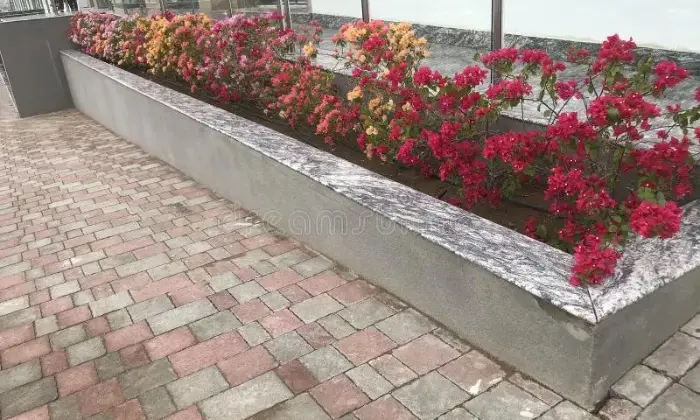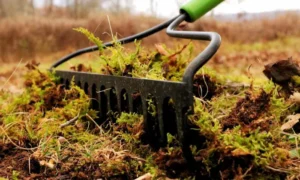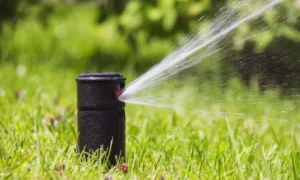
Low Maintenance Front Yard Landscaping Tips and Ideas
Low Maintenance front yard landscaping plays a crucial role in enhancing the overall aesthetic appeal of a property while also serving functional purposes. It’s often

If you are looking for a concrete wall that is both decorative and functional, look no further than a concrete planter wall. A concrete planter wall can be used to add privacy to your yard or garden or to create a beautiful patio or deck area. These Walls are also great for growing plants and can be used to create a beautiful green fence. Best of all, a concrete planter wall is relatively easy and inexpensive to build.
Planter walls are a great way to add some color and life to your home or public space. They can be used to create privacy, define spaces, and add character. There are many different types of planter walls available, so you can choose the one that best suits your needs. Roberts complete care provide professional services related to landscaping. Reach us today for a free counsel.
A concrete planter wall is a gardening tool that can be used to create a living wall. It is made up of concrete blocks that are drilled and then filled with soil. Plants are then placed in the holes and the blocks are stacked on top of each other to create a vertical garden.
These walls can be used to grow a variety of plants, including herbs, flowers, and vegetables. They are an attractive way to add greenery to a patio or deck, and they can also serve as a privacy screen. In addition, concrete planter walls can help to cool your home during hot summer days. The plants will act as natural air conditioners, providing shade and evaporating water to keep your home cool.
Unlike traditional concrete planters, which can be heavy and difficult to move, Planter Wall Blocks are lightweight and easy to install. Simply stack the blocks together to create a freestanding wall, or attach them to an existing fence or structure. Once in place, you can fill these Blocks with soil and plants of your choice. drought-tolerant succulents, for example, are perfect for hot, sunny locations.
Alternatively, you can use the Planter Wall Blocks to create a privacy screen or windbreak. The possibilities are endless! Whether you’re an experienced landscaper or a first-time gardener, These Blocks are a great way to add beauty and function to your outdoor space.
To make a concrete planter wall, you will need:
Material:
Wire Mesh, Rebar, Concrete Mix, Water, Plastic Sheeting, a Trowel, and a Level.
Process
These blocks are specifically designed for creating concrete planter walls, and they offer several benefits. First of all, they’re made from high-quality concrete, so you can be sure that your planter wall will be durable and long-lasting.
Plus, the blocks are easy to work with and assemble, so you’ll be able to create a professional-looking wall in no time. And because they’re available in a variety of sizes and colors, you can easily find the perfect match for your space. So whether you’re looking for a way to add privacy or simply want to create a beautiful focal point, Oldcastle Planter Wall Block is a great option.
Cinder Block Planter Wall is fairly easy to make and can be customised to match the décor of your home. To make a cinder block planter wall, you’ll need:
These planter walls are perfect for small apartments or homes with limited outdoor space. You can find Vertical Planter Walls made from a variety of materials, but concrete is a great option because it is durable and easy to maintain. Plus, it gives your home a modern look. When choosing a concrete planter wall, be sure to pick one that is the right size for your space and has drainage holes to prevent your plants from getting too much water. Once you have your planter wall, you can get creative with what plants you put in it.
Walls are a great way to liven up any garden or patio. They are also a great way to add privacy to an outdoor space. Outdoor Planter Walls are made of concrete, stone, or brick and can be placed against a wall or fence. They can also be free-standing. These Planter Walls come in a variety of sizes, shapes, and colours. They can be simple or complex in design. Outdoor Planter Walls can be purchased at most home improvement stores or online.
Looking to add some dimension and design to your home’s exterior? Consider creating a concrete planter wall. OldCastle Planter Wall Block Designs are a great way to do this. There is a variety of such designs to choose from:
No matter what your vision for your home’s exterior may be, OldCastle planter wall blocks designs can help you bring it to life. With so many uses and design possibilities, these versatile blocks offer endless possibilities for updating your home’s look.
Concrete planter walls are an excellent way to add curb appeal to your home while also providing a functional space for gardening. By following the steps outlined in this article, you can easily build your concrete planter wall. In addition to being a beautiful addition to your home, concrete planter walls can also help to prevent soil erosion and filter stormvwater runoff.
If you live in an area with high winds, you may also want to consider adding a windbreak to your concrete planter wall. With a little planning and effort, you can have a stunning concrete planter wall that will enhance the beauty of your home.
How much does it cost to make a concrete planter wall?
The cost of making a concrete planter wall will vary depending on the materials used and the size of the project.
Can I build a concrete planter myself?
Yes, you can build your concrete planter! Just follow the steps outlined above.
Do I need any special tools?
No, you shouldn’t need any special tools beyond what you would use for any other home improvement project.
What if I don’t have enough space for a traditional garden?
A concrete planter is a great option for people who live in apartments or other small spaces. They take up very little room and can even be hung on a balcony or patio railing.
Are there any risks involved with building a concrete planter?
As with any home improvement project, there are always some risks involved. However, as long as you take precautions and follow instructions carefully, these risks can be minimised.

Low Maintenance front yard landscaping plays a crucial role in enhancing the overall aesthetic appeal of a property while also serving functional purposes. It’s often

How to get rid of moss in your lawn can be a persistent problem, often appearing as a dense, green carpet that outcompetes grass for

Lawn fungus represents a significant challenge for homeowners and landscape professionals, impacting the aesthetic and health of lawns. These fungal infections can manifest as unsightly

Best time to water lawn and maintaining a lush, green lawn often involves more than just regular mowing. One crucial aspect of lawn care is

Ensuring optimal grass growth is crucial for maintaining a lush and healthy lawn. One of the key factors in achieving this is using the right

In the bustling metropolis of the sprinkler repair los angeles, where the sun shines almost year-round and the risk of fires is a constant concern,

Robert’s Complete Care has a proven track record of providing creative, high-quality lawn care Whittier services, CA area.
Copyright © 2023. All rights reserved Robert's Complete Care | Powered by Localpro1.